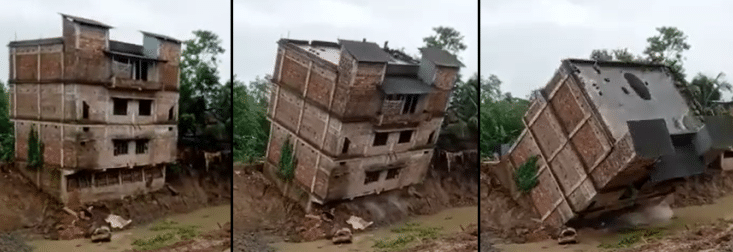This article discusses the failure of shallow foundations due to soil failure. In addition to soil failure, the foundation can also fail due to structural capacity failure.
In this article we will discuss the foundation on which a vertical load has been applied.
The construction of the foundation is carried out within the permissible bearing capacity. The foundation can reach its maximum bearing capacity for the maximum loads applied to form the structure.


There are three causes of shallow foundation failure.
- General shear failure
- Local shear failure
- Punching rupture
Let's discuss each type of error in detail.
General shear failure
Gradually increasing the load on the foundation will cause more settlement of the foundation and increase pressure under the foundation.
When the pressure beneath the foundation reaches the maximum pressure height that the ground can withstand, sudden foundation failure occurs.
These types of foundation failures occur in soils with low compressibility.


The greatest pressure that the soil can withstand is the maximum load capacity of the foundation. As stated above, when the load reaches maximum capacity it fails.
- This type of shallow foundation failure occurs in dense sand or hard, cohesive soil.
- Dense and rigid soils have low compressibility, leading to shear failure.
- Failure causes the foundation to tilt.
Local shear failure
In soils of medium compaction, local shear failures occur.
An increase in foundation pressure increases foundation settlement and the fracture surface in the soil gradually expands away from the foundation.
The fracture surface does not reach the earth's surface due to the compressibility of the soil or the greater depth of the foundation.


Punching rupture
This type of superficial foundation failure occurs when the foundation rests on relatively loose soil, where the settlement of the foundation is greater.
Due to the compressibility of the soil, no shear surfaces are created.
The soil under the foundation becomes compressed and cannot withstand the pressure of the foundation.


The figure above shows the fracture surface and load settlement curve of the foundation.
The Soil Improvements article could be used for methods to improve soil conditions to achieve greater bearing capacity.
Also read the article on How to determine the type of foundation it may be useful to know the methods for determining the type of foundation.

